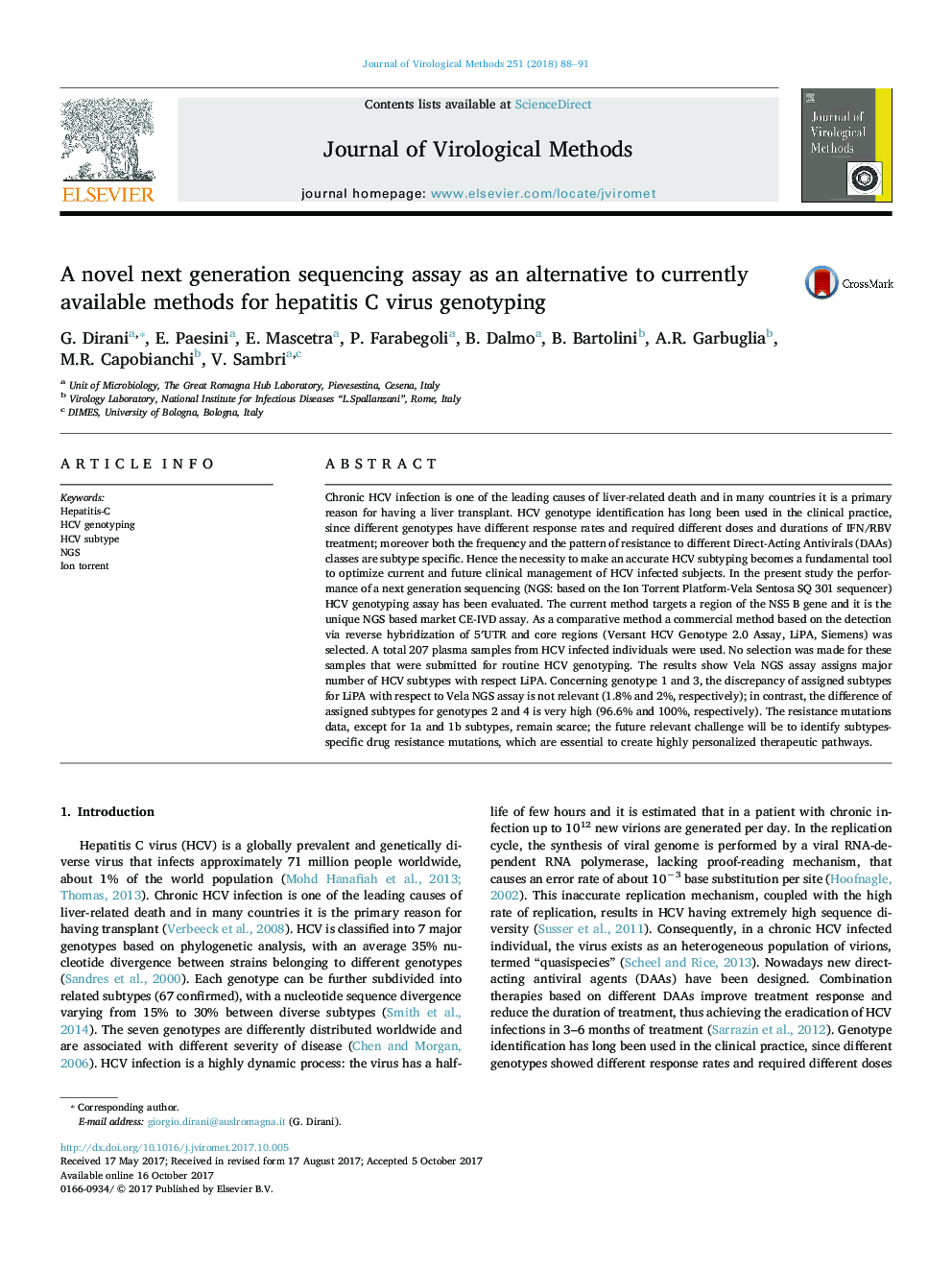| کد مقاله | کد نشریه | سال انتشار | مقاله انگلیسی | نسخه تمام متن |
|---|---|---|---|---|
| 5672892 | 1593426 | 2018 | 4 صفحه PDF | دانلود رایگان |

- NGS based method was evaluated against standard diagnostic assay for HCV genotyping.
- Assigned subtypes for genotype 2 and 4 increased significantly.
- Subtyping for genotype 1 and 3 did not show significant divergence.
- The assay is suitable for diagnostic use with routinely methods.
- The NGS based method is the unique CE-IVD marked assay for HCV genotyping.
Chronic HCV infection is one of the leading causes of liver-related death and in many countries it is a primary reason for having a liver transplant. HCV genotype identification has long been used in the clinical practice, since different genotypes have different response rates and required different doses and durations of IFN/RBV treatment; moreover both the frequency and the pattern of resistance to different Direct-Acting Antivirals (DAAs) classes are subtype specific. Hence the necessity to make an accurate HCV subtyping becomes a fundamental tool to optimize current and future clinical management of HCV infected subjects. In the present study the performance of a next generation sequencing (NGS: based on the Ion Torrent Platform-Vela Sentosa SQ 301 sequencer) HCV genotyping assay has been evaluated. The current method targets a region of the NS5Â B gene and it is the unique NGS based market CE-IVD assay. As a comparative method a commercial method based on the detection via reverse hybridization of 5â²UTR and core regions (Versant HCV Genotype 2.0 Assay, LiPA, Siemens) was selected. A total 207 plasma samples from HCV infected individuals were used. No selection was made for these samples that were submitted for routine HCV genotyping. The results show Vela NGS assay assigns major number of HCV subtypes with respect LiPA. Concerning genotype 1 and 3, the discrepancy of assigned subtypes for LiPA with respect to Vela NGS assay is not relevant (1.8% and 2%, respectively); in contrast, the difference of assigned subtypes for genotypes 2 and 4 is very high (96.6% and 100%, respectively). The resistance mutations data, except for 1a and 1b subtypes, remain scarce; the future relevant challenge will be to identify subtypes-specific drug resistance mutations, which are essential to create highly personalized therapeutic pathways.
Journal: Journal of Virological Methods - Volume 251, January 2018, Pages 88-91